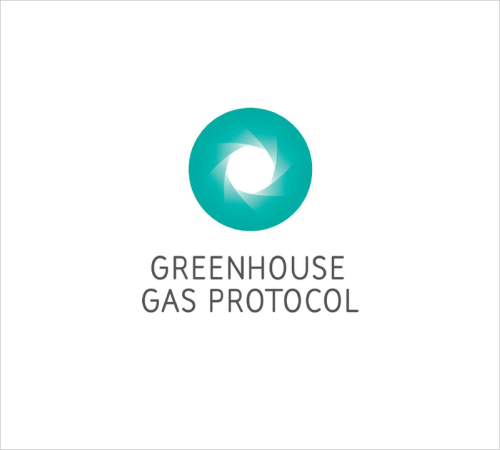Synopsis
AQ Green TeC’s carbon management solutions are aligned with the Greenhouse Gas Protocols (GHGP) developed by the World Resources Institute and World Business Council for Sustainable Development. Our team has produced some FAQs with the questions we are often asked about the GHGP. We hope our answers will help build your understanding of how and why these protocols are so important to measurement, reporting and action on carbon emissions. And enabling the race to Net Zero.

Contents:
-
FAQS on the GHG Protocols and AQ Green TeC
-
Why did WRI and WBCS collaborate to create the Greenhouse Gas Protocol (GHGP)?
-
When was the first iteration of GHGP?
-
What is the GHGP used for?
-
How does AQ Green TeC support businesses in measuring their GHG emissions?
-
Which Greenhouse Gases does the GHGP cover?
-
Does the GHGP cover all types of GHG emissions?
-
Which emissions are included in Scope 1?
-
Which emissions are included in Scope 2?
-
Which emissions are included in Scope 3?
-
Which emissions are included in Scope 3 upstream emissions?
-
Which emissions are included in Scope 3 downstream emissions?
FAQs on the GHG Protocols and AQ Green TeC
AQ Green TeC is committed to working with the Greenhouse Gas Protocol developed by the World Resources Institute (WRI) and the World Business Council for Sustainable Development (WBCS). They first saw the need for a global, standardised greenhouse gas accounting framework in the 1990s. Science based targets are going to be vital to help us enable our customers to achieve Net Zero. The Greenhouse Gas Protocol (GHGP) underpins this approach.
Here we answer some of the more regularly asked questions on the Greenhouse Gas Protocol:
Why did WRI and WBCS collaborate to create the Greenhouse Gas Protocol (GHGP)?
The WRI and WBCS created the GHGP as part of a joint initiative to address the need for a comprehensive system for measuring greenhouse gas emissions. The protocol offers a standardised framework that helps businesses measure, manage, report, and reduce their carbon emissions. Their aim was to help organisations see and understand the full impact of their activities across the whole value chain, including upstream and downstream emissions.
When was the first iteration of GHGP?
The first edition of the GHGP Corporate Accounting and Reporting Standard received wide acceptance and extensive adoption worldwide upon its release in September 2001. Since then GHGP has evolved into a multi-stakeholder partnership of businesses, NGOs, governments, and other organisations.
What is the GHGP used for?
The GHGP standards and guidance are currently used to:
- Help organisations build an accurate GHG inventory
- Reduce the costs of assembling a GHG inventory
- Provide information to build an effective strategy to manage and reduce greenhouse gas emissions
- Encourage organisations to consistently account for their greenhouse gas emissions.
How does AQ Green TeC support businesses in measuring their GHG emissions?
AQ Green TeC’s Veriport software has been built with the GHGP very much in mind. Only accurate and comparable measurements by companies all along value chains will enable the transformation required to deliver on our collective climate commitments. Today, more than 90% of Fortune 500 companies directly or indirectly use the GHGP framework for measuring GHG emissions. Our ambition is to enable all companies to benefit from the GHGP through Veriport so that they can measure their own emissions, look at the levers they have to reduce carbon emissions and build their own specific plans which are relevant to their business and their brand.
Which Greenhouse Gases does the GHGP cover?
The GHGP’s reporting standard covers the six greenhouse gases included in the 1997 Kyoto Protocol: Carbon dioxide (CO2), Methane (CH4), Nitrous oxide (N2O), Hydrofluorocarbons (HFCs), Perfluorocarbons (PFCs) and Sulphur Hexafluoride (SF6).
Does the GHGP cover all types of GHG emissions?
Yes. It splits greenhouse emissions into the three distinct Scopes: Scope 1, Scope 2, and Scope 3.
Which emissions are included in Scope 1?
Scope 1 includes GHG emissions directly released from sources controlled by an organisation and is divided into four categories:
- Stationary combustion, which includes office boilers, furnaces, and other heating sources.
- Mobile combustion, which includes emissions from the vehicles owned and operated by an organisation.
- Fugitive emissions, which are leaks of greenhouse gases from refrigeration, air conditioning, and other devices.
- Process emissions, which are emissions released during on-site manufacturing as a part of the production.
Which emissions are included in Scope 2?
Scope 2 includes greenhouse gas emissions from the generation of an organisation’s energy.
This includes indirect emissions from energy generated by a third party, such as an energy supplier like British Gas or EDF Energy.
The GHGP includes them in an organisation’s Scope 2 emissions as they result from the reporting organisation’s energy use.
Which emissions are included in Scope 3?
Scope 3 includes all GHG emissions from across an organisation’s value chain not already included in Scopes 1 and 2. For many organisations, the majority of their emissions will fall into Scope 3.
The GHG protocol splits Scope 3 emissions into 15 categories, which are either upstream or downstream emissions. <Click here to see how these can be assessed using our Veriport Measurement solutions.>
Which emissions are included in Scope 3 upstream emissions?
Upstream Scope 3 emissions include all greenhouse gas emissions before any raw materials enter an organisation’s production stage. As is set out in the GHGP standards, the following are considered upstream Scope 3 emissions.
Business travel, which includes “emissions from the transportation of employees for business-related activities in vehicles owned or operated by third parties, such as aircraft, trains, buses, and passenger cars”. This includes most employee travel during office hours but excludes commuting. Our new AQ Green App will help you see how you and your employees can play your part.
Employee commuting, which includes “emissions from the transportation of employees between their homes and their worksites”. Car, bus, rail, and air travel are all included in this category. Organisations located in urban centres will generally have lower employee commuting emissions due to easier accessibility through public transport. Here, also our new AQ Green App (link) will help you see how to play your part.
Operational waste, which includes “emissions from third-party disposal and treatment of waste generated in the reporting company’s owned or controlled operations”. This relates to waste sent to wastewater treatment centres and landfills. As these emissions are not controlled directly by the organisation, they fall under Scope 3.
Purchased goods and services, which includes “emissions from the production of products purchased or acquired by the reporting company”. This relates to the greenhouse gases released by a company’s suppliers.
Upstream transportation and distribution, which includes emissions from both “transportation and distribution of products purchased in the reporting year, between a company’s tier 1 suppliers and its own operations in vehicles not owned or operated by the reporting company”, and “third-party transportation and distribution services purchased by the reporting company”. Carbon emissions by an organisation’s suppliers when delivering raw materials are included in this category.
Fuel and other energy-related activities, which includes “emissions related to the production of fuels and energy purchased and consumed by the reporting company in the reporting year that are not included in Scope 1 or Scope 2.”
Capital goods, or assets used by a company as part of the production process, includes “all upstream emissions from the production of capital goods purchased or acquired by the reporting company.”
Upstream leased assets, which includes “emissions from the operation of assets that are leased by the reporting company…and not already included in the company’s Scope 1 or Scope 2 inventories”. Emissions from assets leased by the reporting company from other organisations are reported here.
Which emissions are included in Scope 3 downstream emissions?
Downstream Scope 3 emissions include greenhouse gas emissions after a product leaves an organisation’s control. The following are considered downstream Scope 3 emissions as set out in the GHGP standards.
Investments, which include “emissions associated with the reporting company’s investments in the reporting year, not already included in Scope 1 or Scope 2”. This category was designed for financial institutions but is still relevant to most organisations.
Franchises, which include “emissions from the operation of franchises not included in Scope 1 or Scope 2”. The organisation granting the franchise licence should report the Scope 1 and Scope 2 emissions. The franchisee should report the Scope 3 emissions.
Downstream leased assets, which include “emissions from the operation of assets that are owned by the reporting company and leased to other entities…not already included in Scope 1 or Scope 2.”. Emissions from assets leased to other organisations are included in this category.
Processing of sold products, which includes “emissions from processing of sold intermediate products by third parties (e.g., manufacturers) subsequent to sale by the reporting company”.
Use of sold products, which includes “emissions from the use of goods and services sold by the reporting company…include[ing] the Scope 1 and Scope 2 emissions of end users. End users include both consumers and business customers that use final products.”. This category includes any emissions in use by consumers or businesses by the reporting company’s products.
End of life treatment of sold products, which includes “emissions from the waste disposal and treatment of products sold by the reporting company…at the end of their life”. This category was designed to encourage businesses to produce recyclable products and packaging to minimise the amount of waste going to landfills.
Downstream transportation and distribution, which includes “emissions that occur in the reporting year from transportation and distribution of sold products in vehicles and facilities now owned or controlled by the reporting company”. This category includes emissions from delivery trucks and other vehicles used to supply products to customers. Emissions from third-party warehouses are also included in this category.
To comply with the GHGP corporate standard, a company must report Scope 1 and 2 emissions, which is where AQ Green TeC’s Veriport software comes in. Veriport is there to help all businesses understand their GHG footprint and to track it and compare it with others over time. Reporting Scope 3 emissions is currently voluntary.
Please get in touch with us at AQ Green TeC if you’d like support in measuring, reducing or off-setting your own organisation’s GHG footprint. We’re all in this together and we are here to help.
**All Scope 3 definitions in quotations are from the GHGP Technical Guidance for Calculating Scope 3 Emissions

